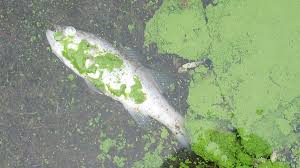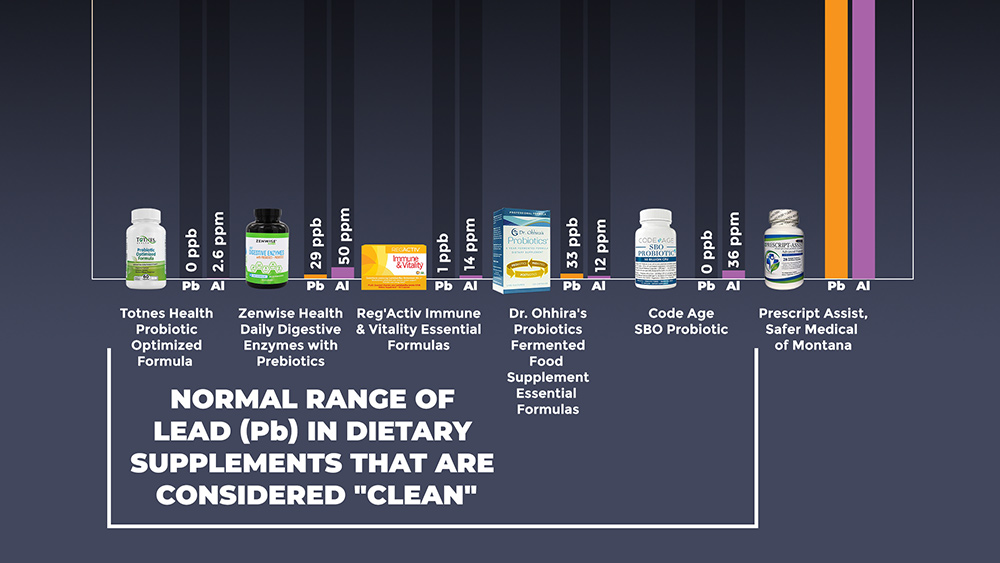Study reveals that toxic algae is causing dolphins to suffer from Alzheimer’s-like brain disease
08/18/2019 / By Edsel Cook

The excessive blooming of blue-green algae might be responsible for the recent spate of deaths among dolphins. A pathological study found toxic compounds in the harmful algae that might cause a neurodegenerative problem similar to Alzheimer’s disease.
Researchers from the University of Miami autopsied the brains and bodies of 14 dead dolphins. For the first time, they found striking levels of beta-Methylamino-L-alanine (BMAA) in 13 of the 14 animals.
Furthermore, they found signs of a condition in the dolphins’ brains that resembled those found in humans with Alzheimer’s disease and Parkinson’s disease.
One of the many toxic products of blue-green algae, BMAA is an amino acid whose levels in the water increase whenever there’s an algal bloom.
The results of their investigation recommended follow-up research on the connection between the BMAA toxin and the harmful effects seen on the brains of dolphins. It also warned about the possible side effects of increasingly frequent algal blooms on humans who consume contaminated seafood and water.
“It goes to show the health of marine animals and water quality,” explained Miami researcher and lead author David Davis in an interview. “Everything’s directly related.” (Related: It’s a simple chain of cause-and-effect: Toxic green algae in Florida is the result of man-made pollution.)
Algal blooms are expected to appear more frequently in the coming years
Experts warned that massive blooms of toxic blue-green algae might occur with higher frequency in the coming years. They identified water with high salinity, air pollution in the form of carbon dioxide, and shifts in rainfall levels as factors that lead to algal blooms.

|
Discover how to prevent and reverse heart disease (and other cardio related events) with this free ebook: Written by popular Natural News writer Vicki Batt, this book includes everything you need to know about preventing heart disease, reversing hypertension, and nurturing your cardiac health without medication. Learn More. |
When the three factors come together, they produce the perfect condition for algae to grow uncontrollably.
In recent years, harmful algal blooms have overrun local bodies of water in Cleveland, Ohio. The severity of the blue-green algal infestation has forced the state government to intervene in city affairs.
While the algal blooms have proven deadly, no one knows the exact effects of BMAA and other toxic compounds on humans. But existing research has shown that blue-green algae may affect humans through the food and water they consume.
In 2011, researchers from around the world began connecting the consumption of BMAA-contaminated seafood to the onset of degenerative brain problems. In a similar vein, a National Oceanic and Atmospheric Administration (NOAA) study reported that dolphins got introduced to the toxin through their food.
Researchers are also investigating a much larger set of dead dolphins in the Gulf Coast that may have been poisoned by BMAA from algal blooms in the region. Their findings may shed more light on the effects of BMAA, as well as its potential connection to Alzheimer’s disease.
The toxicity of blue-green algae, also known as cyanobacteria
Blue-green algae are photosynthetic microorganisms called cyanobacteria. One of the oldest lifeforms on Earth, they live in any place that contains sufficient amounts of water. Some cyanobacteria even live in conditions similar to Mars.
Their favorite environments are lakes, ponds, and warm, still waters.
For protection, cyanobacteria produce different kinds of toxins, such as BMAA. These toxins are lethal to fish and other animals that feed directly on algae.
In humans, ingesting large amounts of BMAA is said to harm the liver and impair nerve function.
During the worst algal blooms in lakes and reservoirs that provide drinking water to Cleveland and other cities, hundreds of people got sick because of BMAA poisoning. Officials now routinely close these bodies of water whenever an algal bloom occurs.
Sources include:
Tagged Under: algae blooms, algal blooms, Alzheimer's disease, animal deaths, animal health, beta-Methylamino-L-alanine, blue-green algae, BMAA, Brain disease, brain health, contaminated seafood, cyanobacteria, dolphins, drinking water, Ecology, environ, environment, impaired nerve function, liver damage, marine life, neurodegenerative diseases, neurology, Parkinson's Disease, research, science, toxic algae, toxic chemicals, toxins, water health, water poisoning, water quality


















